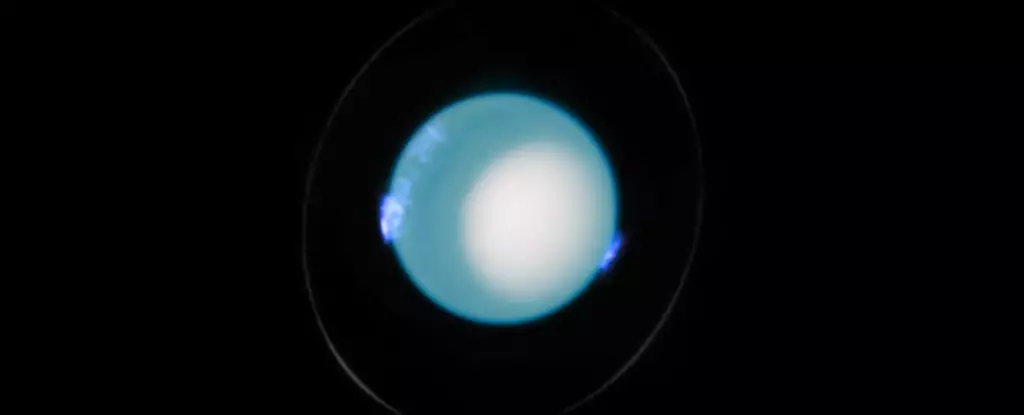In the realm of planetary science, the enigmatic gas giant Uranus has persistently eluded our understanding, standing at the fringes of our Solar System. Recognized for its striking blue coloration owing to methane in its atmosphere, what has been traditionally known about Uranus is now undergoing a significant revision thanks to groundbreaking research. The latest findings suggest that a day on this distant planet does not last 17 hours as previously thought, but rather 17 hours, 14 minutes, and 52 seconds. This 28-second discrepancy may seem trivial at first glance, yet it carries monumental implications for our knowledge of the planet’s rotation, magnetic field, and overall behavior.
The Importance of Accurate Measurements
The implications of redefining the length of a Uranian day extend well beyond mere numbers. Historically, the rotation period was gleaned from data collected during the Voyager 2 mission in 1986, a time when the technology and methods available for planetary measurement were rudimentary compared to today’s advanced techniques. The inaccuracy of earlier measurements led to confusion in coordinating magnetic maps, resulting in a loss of orientation for Uranus’s magnetic poles shortly after the Voyager encounter. Laurent Lamy, an astrophysicist at the Paris Observatory, articulately emphasizes this point, stating that the new measurement not only serves as a crucial reference point for scientists but also resolves a longstanding issue in the accurate mapping of Uranus’s magnetic field.
Challenges in Observing Distant Giants
Uranus and its companion Neptune are positioned at a staggering distance from the Sun, far beyond Saturn. This immense distance poses a significant challenge for astronomers, as it makes these planets appear small and dim, requiring sophisticated equipment and methods for effective observation. Historically, only the Voyager mission has come close enough to gather detailed information about these ice giants, making our current understanding limited and heavily reliant on past data that could be outdated or biased. As Lamy notes, the challenge of obtaining fresh insights into Uranus is compounded by the technical difficulties inherent in conducting long-distance astronomical observations.
Innovative Techniques to Redefine a Planet
To combat the inaccuracies stemming from outdated information, the research team utilized data collected by the Hubble Space Telescope from 2011 to 2022. This comprehensive dataset provided critical insights into Uranus’s ultraviolet auroras, which are similar to Earth’s northern and southern lights and act like glowing indicators of the planet’s magnetic field. The innovative approach of tracking these auroras has allowed scientists to effectively navigate the challenges posed by Uranus’s unique rotational axis, which is inclined nearly parallel to the ecliptic plane—a stark contrast to the perpendicular orientations found in other planets.
The new rotational measurement is being hailed as the most precise ever documented for a giant planet, surpassing even that of the more extensively studied Jupiter. This remarkable accuracy heralds a new era in our ability to measure the rotation of other gas giants in our Solar System, thus enhancing our understanding of planetary dynamics and behaviors across these distant worlds.
A Future Filled with Possibilities
With this revitalized understanding of Uranus’s rotation, scientists can now approach future missions with confidence, equipped with precise mapping of the planet’s magnetic poles and coordinate systems. Lamy points out that this fresh longitudinal system enables researchers to analyze nearly four decades of auroral observations, paving the way for ongoing and future explorations of Uranus. As plans for new missions are developed, the insights gained from this research will form the bedrock for more comprehensive studies, perhaps unlocking further mysteries and revealing secrets that have remained obscured for far too long.
Ultimately, these advancements not only contribute to the body of planetary science but also inspire a sense of wonder about the diversity and complexity present in our Solar System. The new revelations about Uranus exemplify the ever-evolving nature of science and serve as a reminder that even well-established knowledge can benefit from re-examination and innovative methodologies. As we stand on the brink of a deeper exploration of our cosmic surroundings, Uranus remains not just a cold, distant world, but a treasure trove of scientific potential.


Leave a Reply